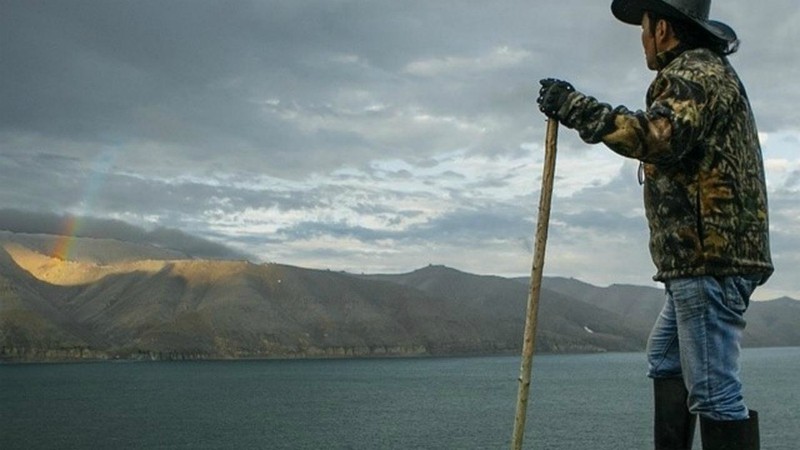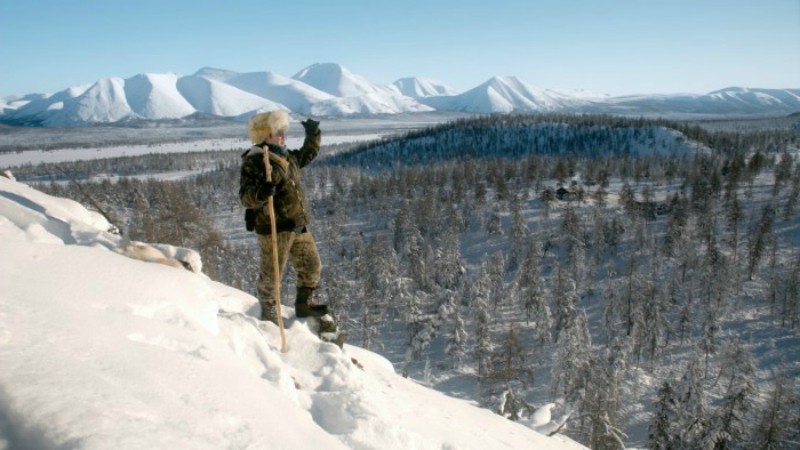For nine days, nearly 100 movies made by Indigenous filmmakers in every corner of the planet will be showcased in a variety of London venues. They include Nigerian Yoruba, Filipino T’boli, Yakutian horsebreeders from Russia, and a even a very transgressive Indiqueer Canadian Cree filmmaker. Many artists will attend the Festival, showcase their work, and debate the challenges of Indigenous life and filmmaking with an enthusiastic audience of Indigenous people, activists, researchers and film lovers in general. The action kicks off on Saturday, October 12th, Indigenous Peoples’ Day in the US.
Native Spirit Film Festival was founded by Mapuche filmmaker Freddy Treuquil in 2005. It is the UK’s first and only independent annual festival promoting contemporary Indigenous Cinema, MediaMakers and Artists and are event participants with Unesco International Year of Indigenous languages.
Below are the some of the most important Festival highlights. Click on the titles in order to accede to the individual reviews. You can see the full programme either on our calendar, on Native Spirit’s Facebook page or Eventbrite, where you can also purchase your ticket.
…
.
1. Thirza Cuthand Retrospective:
Thirza Jean Cuthand was born in Saskatchewan and grew up in Saskatoon, and she is of Cree origin. Starting in 1995, Cuthand began exploring short experimental narrative videos and films about sexuality, madness, youth, love, and race, using national, sexual and Indigenous experiences to showcase in unfiltered raw exteriors.
Make no mistake, there is purity at play here. Collecting the confines, conditions and contractions of Cuthand’s milieu, the varied works slip together into one continuous narrative written years, even decades, apart. More to the point, the essays cross genres from the pointedly visual into the realms of performance arts.
Don’t forget to check our exclusive interview with Thirza Cuthand by clicking here!
.
2. K’Na Dreamweaver (Ida Anita Del Mundo, 2015):
Young T’boli princess K’Na (Mara Lopez) finds herself trapped in an undesirable dilemma, as she has to balance realising her personal dreams with her duties as a village dream-weaver. Chosen by her town-folk to fill the vacant position, K’na is freighted with delivering visions through colourful abaca fibres. Tied to the boughs that hold her village afloat, K’na fancies the courtship from the broad-shouldered Silaw (RK Bagatsing), before Royal duties divide her impressionable intentions from her personal. The tribes follow tradition with the punishing reverence of survival, but K’na and Silaw share some moments of unbridled flirtation. Animalistic in their desire, their collegiality needs to be subdued.
.
3. 24 Snow (Mikhail Barynin, 2019):
The highs and lows of extreme rural living are expertly depicted in 24 Snow, a documentary that dives into life in one of the most inhospitable places on earth. Alternating scenes of natural beauty with a down-to-earth character portrait of an middle-aged Yakut horse breeder, it celebrates traditional forms of living while lamenting their slow erosion to the forces of modernisation.
Sergey Loukin’s story takes place in the area around Sakkyryr, Russia, one of the coldest inhabited places on earth, where temperatures regularly plummet below minus fifty degrees. It’s so cold in the winter that sheets of ice cling to the horse’s fur and must be removed with axes, and reindeer and husky-pulled sleds remain the only form of transportation. There is no electricity, no internet and no shops for miles around. Sergei must make do with his immediate surroundings alone. We follow him for around a year, from snow to summer to snow again.
.
4. Etienne Charles’s Docushorts:
Jazz creole artist Etienne Charles is one of the genre’s most inventive musicians, garnering acclaim for three impressive and well-received albums for his own Culture Shock Music imprint. A man still in his twenties, Charles understands the vitality and power Creole music holds on those who listen to it, inviting audiences to see, listen and feel the music he espouses on a daily basis. His style of raw playing has been hailed hailed by The New York Times as “an auteur” and by Jazz Times as “a daring improviser who delivers with heart wrenching lyricism”.
Through a trilogy of short films, Charles shows the beauty Trinidad holds in both its visual and musical form. Charles’ blend of improvisation and first-class musicianship has an infectious quality that attracts fans of all ages. The films capture the artists pure spontaneity, thriving and diving through the Trinidad streets.










